Roses bring pops of color and beauty to any outdoor garden, but finding the right ones that will thrive in extreme heat can be tricky. Texas has several growing zones with extreme temperature ranges, from arid in the west, to humid in the east. Your perennials should be hardy with a high tolerance to heat and humidity to survive in the sometimes brutal weather conditions. Discover these six roses in Texas, perfect for gardens across the state.
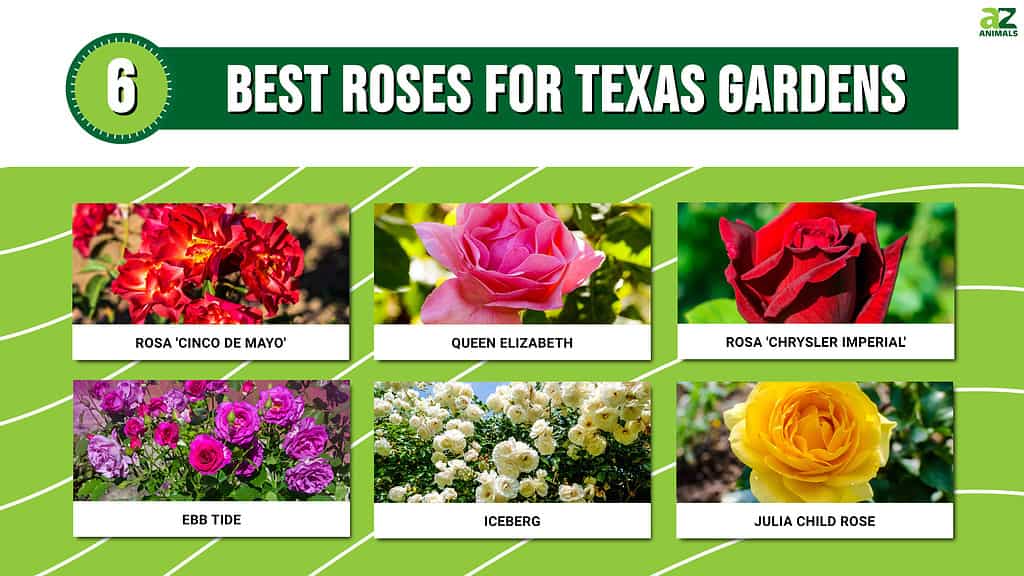
The Best Roses in Texas
Check out the six best roses in Texas, then find out how to plant them, care for them, and what plants complement them best.
1. Rosa ‘Cinco de Mayo’
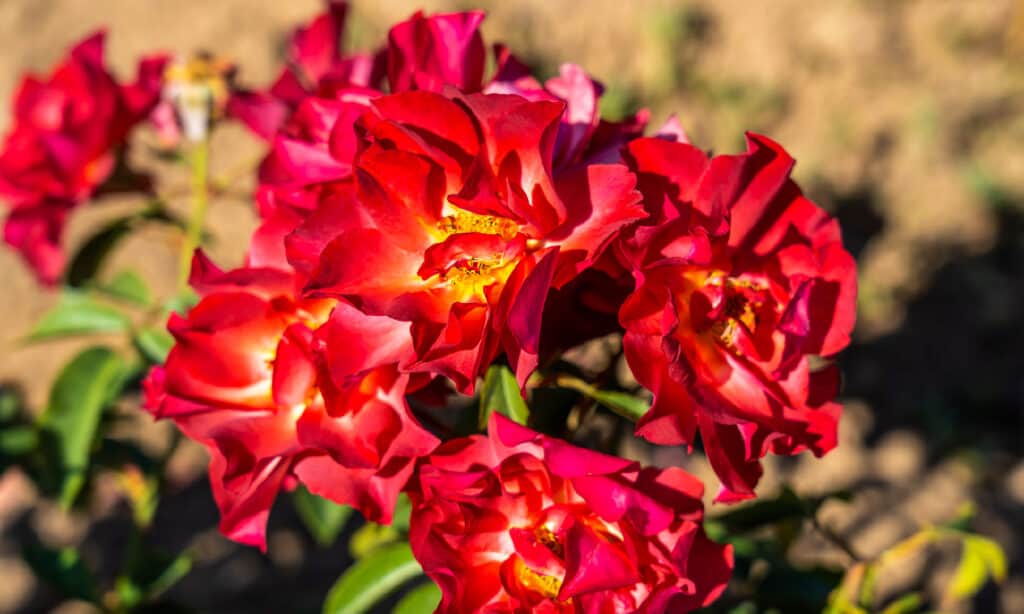
Cinco de Mayo roses are reddish-orange and hazy plum.
©iStock.com/JHVEPhoto
Rosa ‘Cinco de Mayo’ is the perfect color for most gardens with its reddish-orange and hazy plum coloring. This floribunda rose has clusters of wavy, ruffled petals from a long, dark green stem, releasing a sweet apple perfume as you get close. It’s a compacted shrub, perfect for borders and beds, that blooms from late spring to fall and grows best in full sun with rich, moisturized soil.
2. Queen Elizabeth

Queen Elizabeth is an award-winning rose for its light scent and regal blossoms.
©iStock.com/yhelfman
This Grandiflora rose has long been a favorite amongst gardeners. Queen Elizabeth won five awards for its silvery pink regal blossoms atop a deep, rich green shrub. This variety blooms from late spring into fall and is the perfect lush backdrop for your home. It emits a light tea scent that is not overpowering and complements other flowering bushes, especially during the height of summer. This rose variety is very hardy, reliable, and disease resistant, which makes it an excellent choice for Texas gardeners.
3. Rosa ‘Chrysler Imperial’
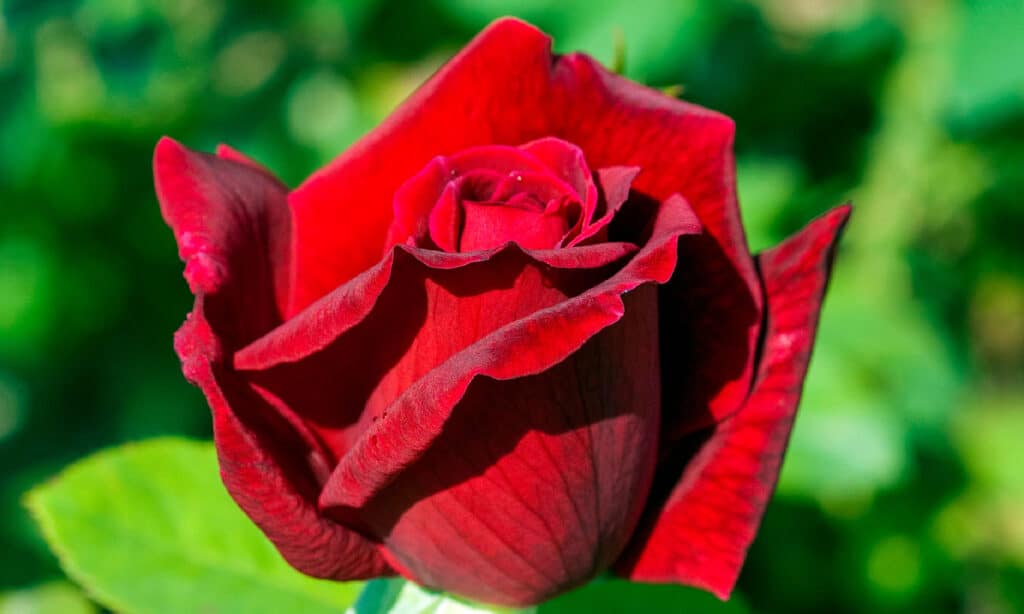
Chrysler Imperial roses look magnificent placed along borders.
©iStock.com/emer1940
This striking hybrid tea rose has an outstanding citrus fragrance and dark crimson petals amongst deep green leaves. It begins as pointed buds but blooms into high-centered petals like velvet. Rosa ‘Chrysler Imperial’ is a hardy rose that performs well in hot climates, blooming from late spring through fall. It requires full sun and looks magnificent when placed along borders and in flower beds. This variety needs adequate moisture but is susceptible to mildew, so proper drainage is necessary.
4. Ebb Tide
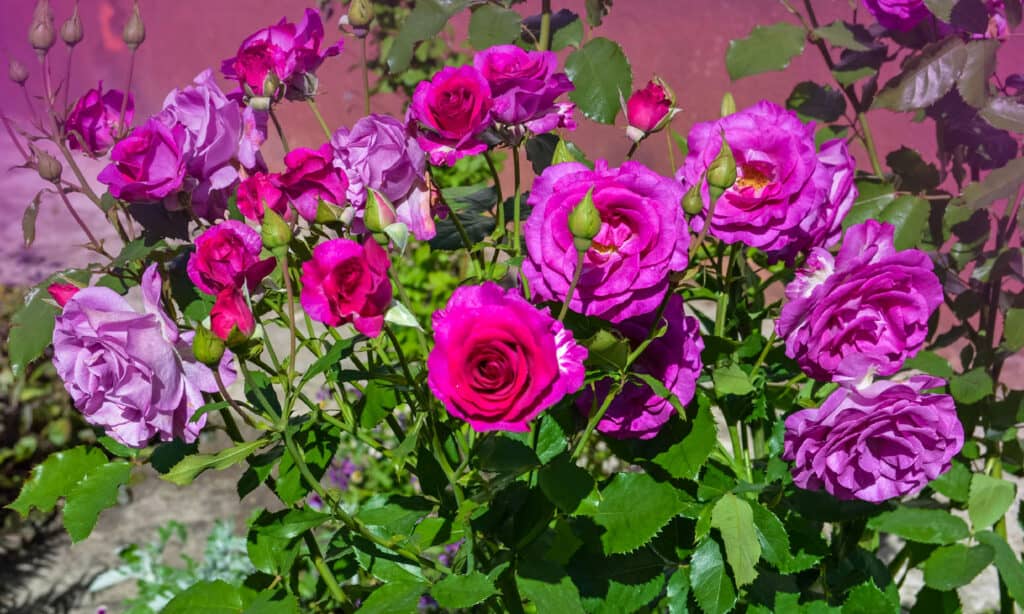
The Ebb Tide rose has rich purple petals and a citrus-clove scent.
©LesiChkalll27/Shutterstock.com
Ebb Tide roses are hard to miss and are notable for their rich purple blossoms and their strong scent of clove and citrus. They feature small clusters of double petals attached to semi-glossy green leaves. The shrubs are compact and round and look great planted in groups along borders or singly as a centerpiece. They also bloom in late spring through fall and are hardy, and disease-resistant, requiring full sun and well-drained soil.
5. Iceberg
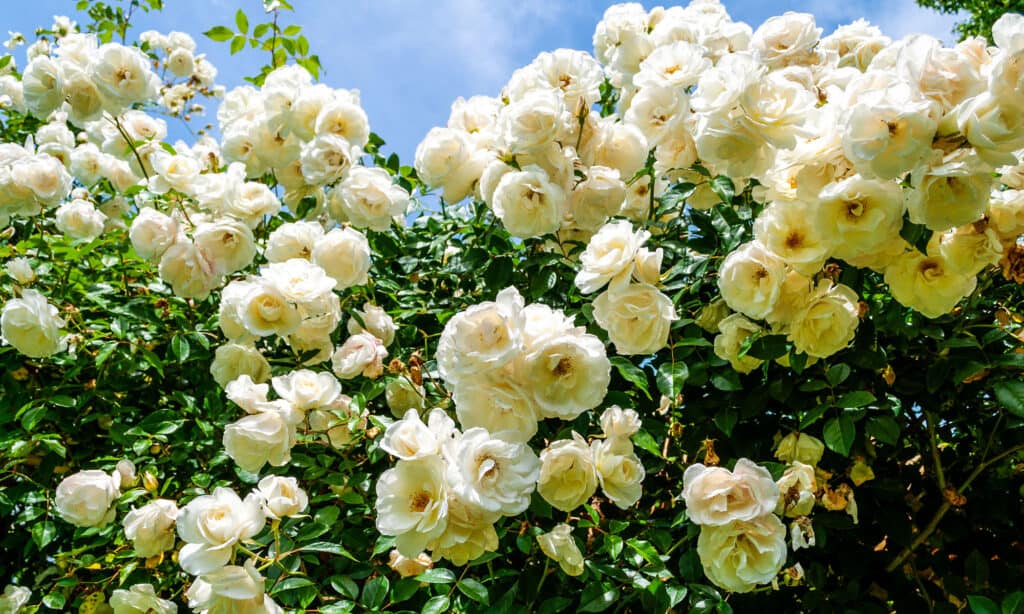
Iceberg roses are hardy and drought-tolerant.
©GAT0/Shutterstock.com
This award-winning floribunda rose features soft white to pale pink double-rounded petals with shiny light green leaves. Iceberg rose is one of the most popular roses due to its mild fragrance of fruit and honey and its continuous summer blooms. It first blooms in late spring, but unlike other roses, it lasts until the first frost. This species looks best in large clusters along borders and can brighten your garden space. This hardy, drought-tolerant rose does well in full sun and light shade.
6. Julia Child Rose

Julia Child roses look lovely placed in a vase in your kitchen.
©iStock.com/HedgerowRose
This variety of the floribunda rose features abundant clusters of creamy yellow ruffled petals amongst silky medium-green leaves. Its small shrub is compact and bushy, ideal for borders and containers; cut some and put it in a pretty vase for your kitchen! Julia Child roses are profuse bloomers with a lovely licorice and clove scent, filling your garden with a sweet and spicy aroma all summer.
How to Plant Roses in Texas
- Prepare your flower bed by clearing the area of any weeds and grass. Loosen the soil by digging around 15 inches deep; remove any rocks.
- Check your soil pH; roses like a pH between 6 and 6.5. If it’s too high, add a little elemental sulfur.
- Remove half of the soil from the hole, fill it with composted organic matter (peat moss and manure), and mix them. Add the topsoil back; it should be slightly elevated above the ground.
- Dig a large square hole to fit the container and add superphosphate to the bottom. Loosen the plant’s root gently and place it into the hole.
- Fill the hole with soil and gently tamp it down around the plant.
- Gently water until it has settled into the soil.
How to Care For Roses
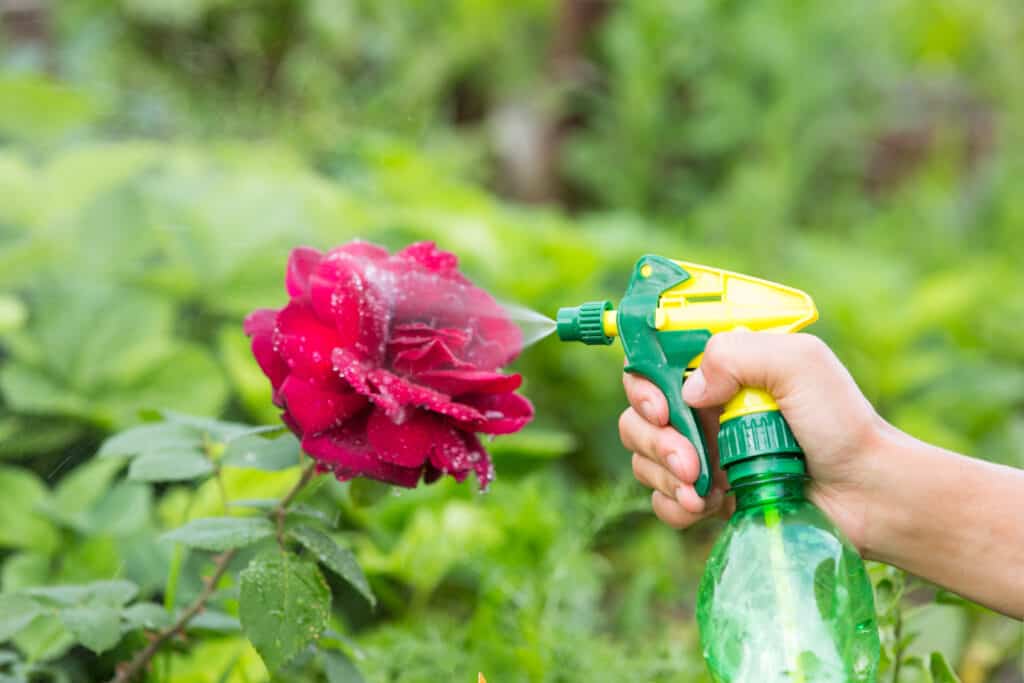
Roses like full sun, mulch, and fertilizer.
©Tiplyashina Evgeniya/Shutterstock.com
- The best time to plant roses in Texas is mid-February after the chance of frost has passed. You should plant them in the fall or early winter in South Texas.
- Be sure to plant your rose bushes in a spot with full sun.
- Water twice a week throughout the first growing season and add a two to three-inch layer of mulch.
- Texas roses are susceptible to “Rose Rosette” disease, spread by tiny bud mites. There is no treatment, but you can prevent it from spreading by removing an affected plant immediately.
- Space hybrid tea and Grandiflora roses are at least 24 inches apart and floribunda 18 inches apart.
- Critical takeaways for growing roses in Texas: they like sunshine from all directions. They don’t like other plants touching them, only water the soil (not their leaves), and they want a bit of mulch (and fertilizer).
What Should You Plant Next to Roses?
Plant these heat-loving companions to make your garden the best-looking one on the block!
- Lavender
- Columbine
- Fall aster
- Coreopsis
- Four-nerve daisy
- Firebrush
- Virginia iris
- Plumbago
- Aromatic aster
- Rock rose
- Texas frogfruit
- Geraniums
- Verbena
The photo featured at the top of this post is © Tiplyashina Evgeniya/Shutterstock.com
Thank you for reading! Have some feedback for us? Contact the AZ Animals editorial team.






